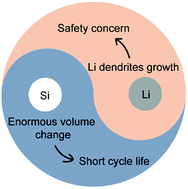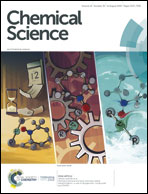Towards high energy density lithium battery anodes: silicon and lithium
Abstract
Silicon and lithium metal are considered as promising alternatives to state-of-the-art graphite anodes for higher energy density lithium batteries because of their high theoretical capacity. However, significant challenges such as short cycle life and low coulombic efficiency have seriously hindered their practical applications. In the past decades, various strategies have been proposed to address the major problems of Si and Li anodes. In this review, we summarize the understanding on Si and Li anodes, highlight the recent progress in the development and introduce advanced characterization techniques. We also indicate the remaining challenges of Si and Li anodes requiring more efforts for future widespread applications. We expect that this review provides an overall picture of the recent progress and inspires more efforts in the fundamental understanding and practical applications of Si and Li anodes.

- This article is part of the themed collection: Most popular 2018-2019 energy articles


 Please wait while we load your content...
Please wait while we load your content...